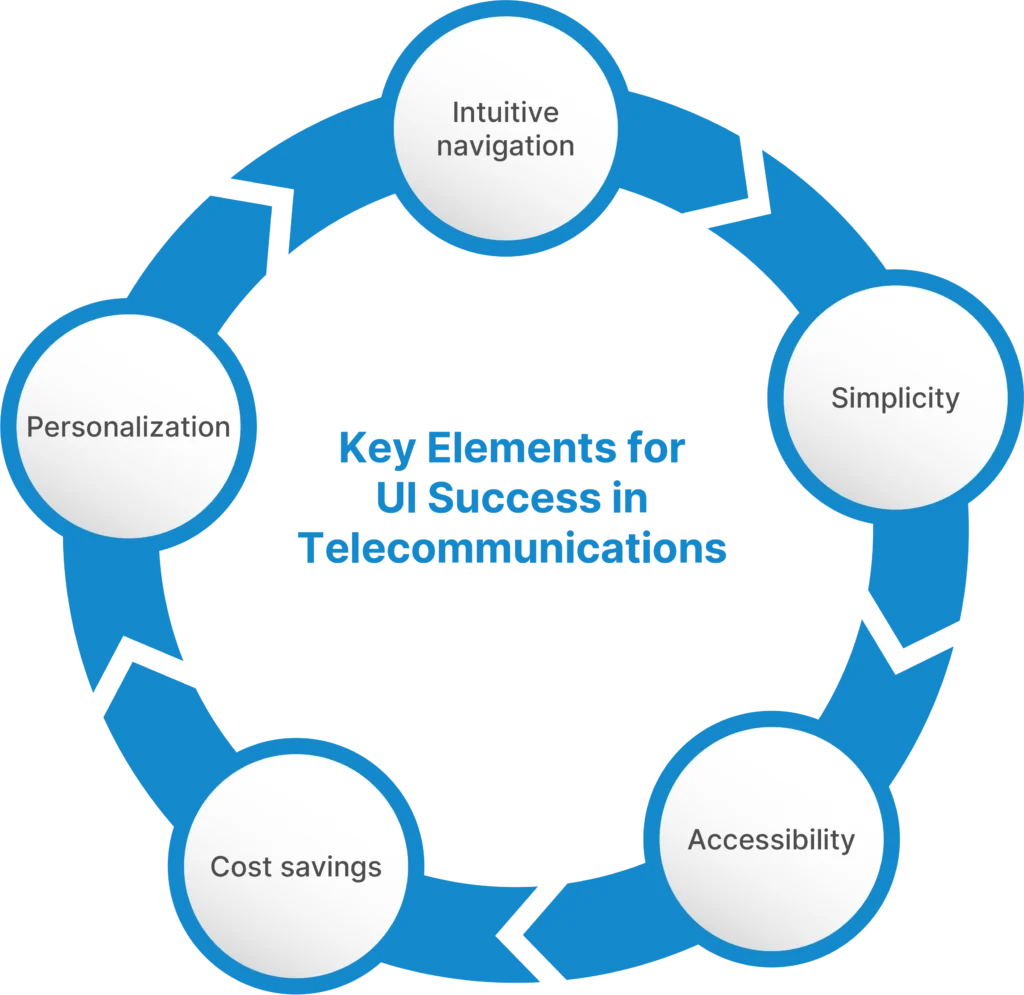Aesthetics in the telecommunications world play a surprisingly significant role. Visually appealing design can greatly influence users’ emotions while using telco software or applications.
A detailed User Interface (UI) enables seamless and easy human-computer communication through various visual elements (colors, buttons, menus, texts).
However, UI simply loses all meaning without the User Experience (UX), which is the way users perceive everything they see and interact with.
Importance of UI and UX, often referred to collectively under the umbrella term product design, applies to communication services as well. Design and accessibility in comms solutions are key factors for further user engagement, marketing and overall success.
Dialing into Design
UI encompasses not only beautiful color palettes but also the overall experience and emotions that arise during software usage.
This is of particular importance for telecommunications providers because a well-designed UI can significantly enhance user engagement, streamline interactions, and ensure positive customer experience.
Therefore, if the UI of your communications software is dated or visually unappealing, the following challenges arise:
- Unintuitive interfaces cause user frustration and inefficiency.
- Poor user experience negatively impacts satisfaction and employee morale.
- Low adoption rates due to resistance to use.
- Hidden or complicated features cause ineffective use of the platform.
- Ineffective use of the platform leads to lower customer satisfaction.
All of this naturally impacts the business on a larger scale than one might expect. According to recent UX metrics, 94% of negative feedback is a direct result of the design.
UI should be understood as a critical element that operates in the background but significantly influences the success of the business.
Beauty Is In The Experience Of The User
People ignore design that ignores people.
Frank Chimero, Designer
Designing and conceptualizing a system or application entails more than just coding and creating appealing visuals.
It involves considering those who will use it and how they will interact with it. No matter how functional the software or application may be, if they are not designed for clear and easy use, that functionality ceases to be important for the UX.
Now that we’ve explored the significance of user experience, without further ado, let’s dive into 5 reasons to prioritize intuitive UI design and enhance UX in telco industry:

Ease Of Navigation Equals Satisfaction
We’ve all experienced frustration at least once due to a complicated interface or unintuitive layouts that convey nothing because they aren’t user-friendly.
Struggle with confusing and generic designs often leaves users feeling unhappy and inefficient, and in some cases, they may even consider abandoning the service altogether.
This is why every icon and option in the telecommunications industry needs to be clear and simple, ensuring that their role is immediately obvious. UI affects UX, and this approach keeps users engaged and boosts their confidence in using the system.
Smooth Sailing Through Tasks
An intuitive and accessible UI enables users to concentrate on their tasks comfortably, without fretting over their clicks, navigating through options, or figuring out where to find help.
A user-centric design allows users to efficiently accomplish their goals, leading to increased productivity and satisfaction without frustration, confusion and similar negative emotions.
This approach makes completing tasks easier and more efficient, helping users get more done in less time.
UI Design’s Role in Adaptation
What should also be kept in mind is variability. In the communication industry, every software, system or app requires updates. Or, perhaps, the business decides to replace its IT infrastructure. This will impact both UI and UX.
New things imply a process of learning and adaptation. If the UI does not follow modern standards of simplicity and intuitiveness, adaptation can become a real nightmare.
On the other side, navigating through a user-friendly and simple interface is easy, and after a few repeated clicks, users will quickly master the system.
Realizing Cost Savings
Using an intuitive, simple, and reliable interface means that chances for running into problems are less likely to occur.
No user confusion translates directly to fewer support tickets and calls. This also reduces the possibility of extra costs for training and troubleshooting.
Telecom providers can then focus their resources on enhancing their services rather than addressing user confusion caused by complicated menu blocks or difficult-to-navigate options.
Forging Ahead in the Market
Functional and usable interfaces have become the main conditions for providing quality UI and UX in telecommunications. With this, satisfaction with the product being used, and consequently, with the telecom provider’s service, is inherently linked.
Providers with superior UI design also gain a competitive edge by differentiating themselves in the market and attracting more customers by introducing unique but still user-friendly features, personalization, feedback options, and integrations.
At Bicom Systems, we recognize the importance of our partners and their clients’ UI, which is why we have developed the white label option. This empowers our partners to offer their clients seamless, user-friendly experiences tailored to their unique needs.
Our User-Centric Design Philosophy
All of the aforementioned reasons why UI is a game-changer for successful business have long been the guiding star at Bicom Systems.
UI elements of all our products are created in such a way that the user comes first, and the intuitiveness remains maintained.
Our team of experts in telecommunications has designed visually appealing designs that are easy to understand and use, and if any difficulties arise, our support team is there to help.
Discover how our innovative UI and UX can transform your telecommunications experience. Contact us today to learn more about our solutions and how they can benefit your business.


